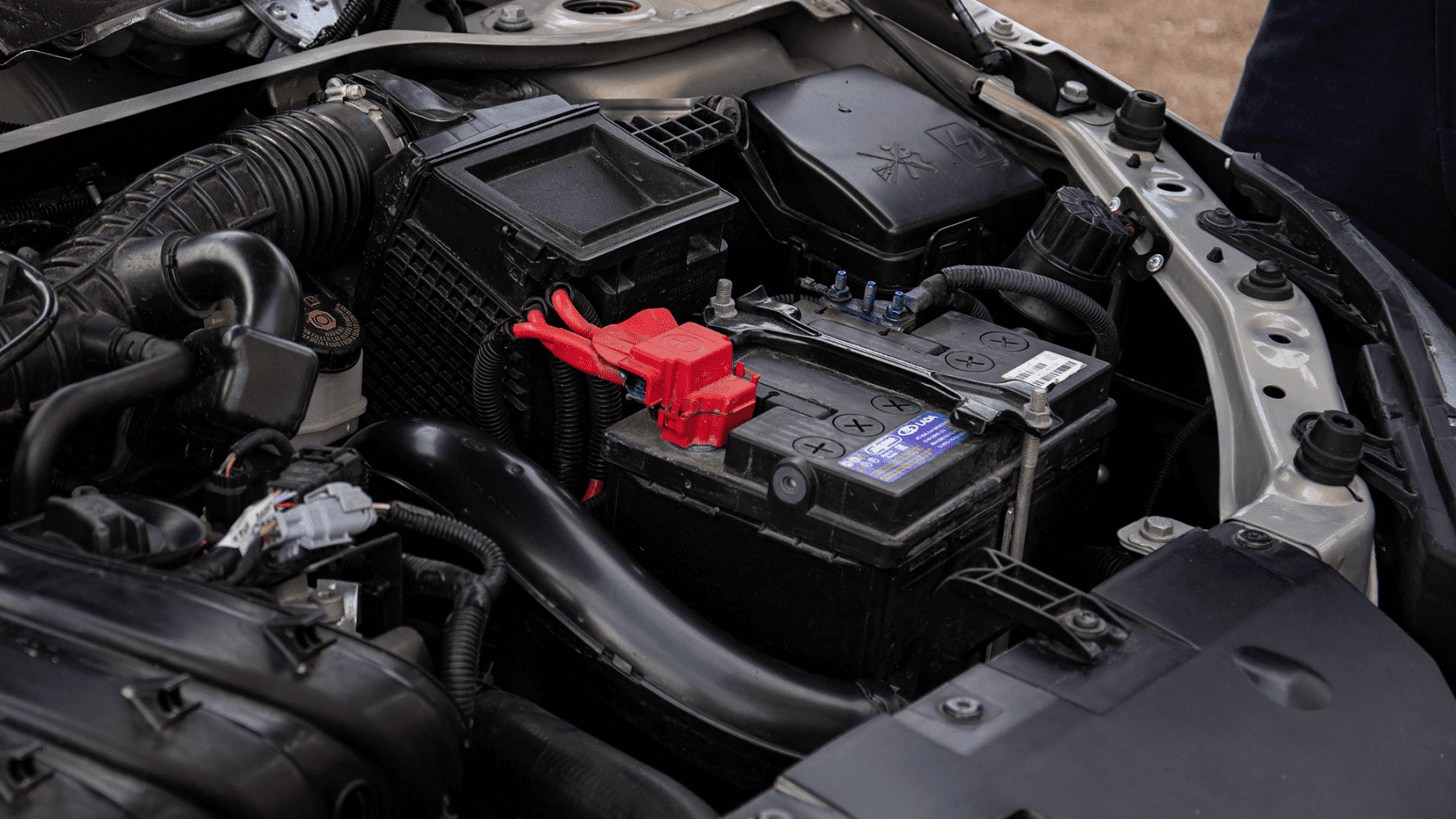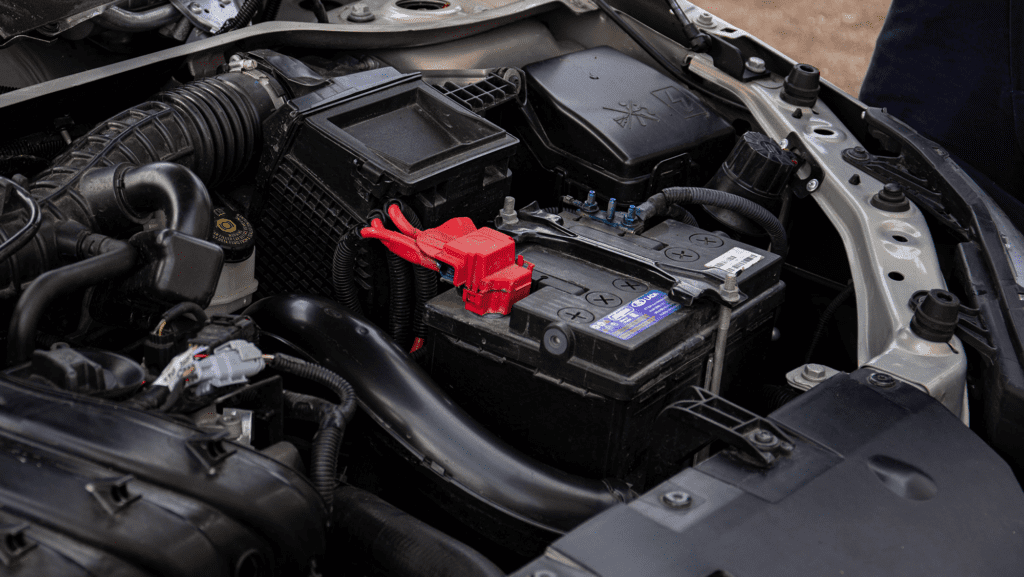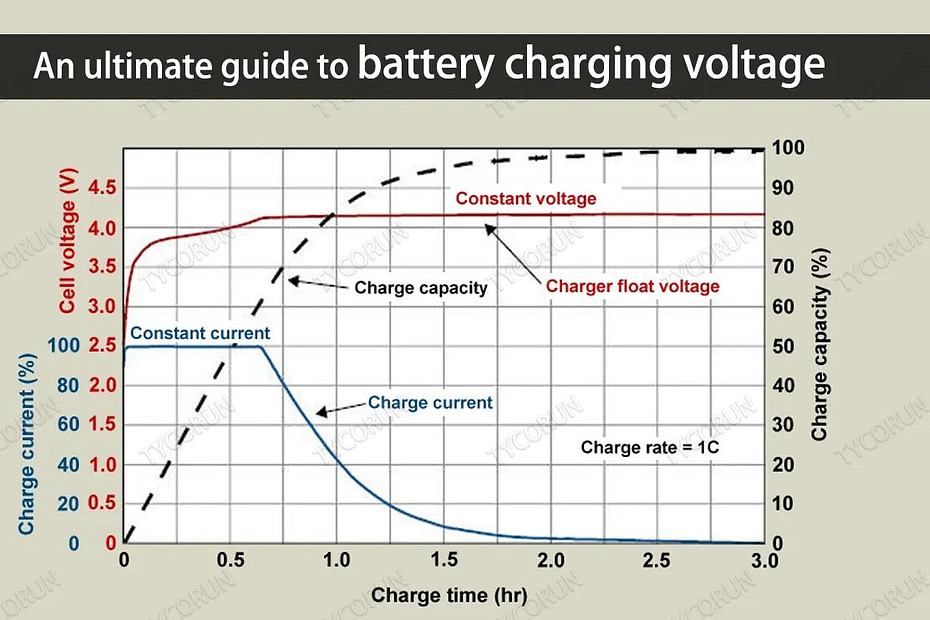To charge a car battery, connect the positive terminal of the charger to the positive terminal of the battery and the negative terminal of the charger to a metal ground on the car. A car battery is an essential component of an automobile, providing the necessary electrical power to ignite the engine and operate various electrical systems.
However, a dead battery can stall your plans and hinder your mobility. Luckily, charging a car battery is a relatively straightforward process that can be done in a few simple steps. We will walk you through the steps to charge a car battery safely and effectively.
Whether you are a car owner faced with a dead battery or simply want to learn this useful skill, read on to discover how to charge a car battery and get back on the road.

Credit: heartautocare.com
Choosing The Right Charger
When it comes to charging a car battery, choosing the right charger is essential. The right charger can ensure a safe and efficient charge, while the wrong one can lead to damage or ineffective charging. In this section, we will discuss two important factors to consider when choosing a car battery charger: the battery type and the charger specifications.
Consider The Battery Type
Before selecting a charger, it is crucial to consider the type of battery in your car. Two common types of car batteries are lead-acid and lithium-ion. Lead-acid batteries are the traditional choice for most vehicles, while lithium-ion batteries are becoming increasingly popular.
Lead-acid batteries require a charger specifically designed for this type of battery. These chargers usually have different charging modes, such as trickle charge, fast charge, and maintenance mode, to cater to the different charging needs of lead-acid batteries.
Lithium-ion batteries, on the other hand, have their own charging requirements. They require a charger that provides a constant voltage and current to ensure a safe and efficient charge. It is important to check the specifications of the charger to ensure it is compatible with your car’s lithium-ion battery.
Understanding The Charger Specifications
When choosing a car battery charger, it is essential to understand the charger specifications. Here are some key specifications to consider:
- Voltage and Amperage: The charger’s voltage and amperage should match the requirements of your car battery. An incorrect voltage or amperage can damage the battery or result in an insufficient charge.
- Charging Modes: Some chargers offer multiple charging modes to cater to different battery requirements. These modes can include trickle charge, fast charge, and maintenance mode.
- Safety Features: Look for chargers with safety features such as reverse polarity protection, overcharge protection, and short circuit protection. These features help prevent damage to the battery and ensure safe charging.
- Portability: If you require a charger that you can take on-the-go, consider a portable charger that is lightweight and compact.
By understanding the battery type and the charger specifications, you can choose a charger that is compatible with your car battery and meets your charging needs. Taking the time to select the right charger will not only ensure a successful charge but also prolong the lifespan of your car battery.

Credit: heartautocare.com
Preparing The Battery
Before charging your car battery, it’s essential to properly prepare it. This involves taking safety precautions and cleaning the battery terminals. By following these steps, you can ensure the successful charging of your car battery and help prolong its lifespan.
Safety Precautions
When dealing with car batteries, certain safety precautions need to be taken to avoid any accidents or mishaps. Here are some important safety measures to keep in mind:
- Make sure to wear protective gloves and goggles to safeguard yourself from any chemical exposure or debris.
- Ensure that the car engine is turned off and the keys are removed from the ignition to prevent any electrical discharge.
- Work in a well-ventilated area to avoid inhaling any harmful fumes that may be emitted during the charging process.
Cleaning The Battery Terminals
The cleanliness of the battery terminals is crucial for proper charging. Over time, corrosion and dirt can build up, hindering the flow of electrical current. Follow these steps to clean your battery terminals effectively:
- Start by removing the battery cables. Begin with the negative cable (labeled with a “minus” sign) followed by the positive cable (labeled with a “plus” sign). This order ensures safer handling.
- Inspect the terminals for any signs of corrosion, such as a powdery white substance. If present, mix a tablespoon of baking soda with a cup of water to create a cleaning solution.
- Using an old toothbrush or a battery terminal cleaner, dip it into the cleaning solution and scrub the terminals and cable ends vigorously. This will help remove any corrosion or dirt.
- Once cleaned, rinse the terminals and cable ends with clean water and dry thoroughly using a clean cloth or towel.
- Before reattaching the battery cables, apply a thin layer of petroleum jelly to the battery terminals. This will help prevent future corrosion.
- Reconnect the battery cables, starting with the positive cable followed by the negative cable.
By taking the time to properly prepare your car battery, you can ensure a safe and efficient charging process. Remember to prioritize your safety by following the necessary precautions and to clean the battery terminals thoroughly. This will help maintain the performance and longevity of your car battery, ensuring it functions optimally when you need it most.
Charging Process
When it comes to charging your car battery, it’s essential to understand the proper charging process to ensure the battery is effectively and safely charged. The charging process involves connecting the charger correctly and monitoring the charging progress. By following these steps, you can maintain your car battery and avoid unexpected breakdowns due to a drained battery.
Connecting The Charger Correctly
Properly connecting the charger is crucial to ensure a successful charging process. Before connecting the charger, ensure the vehicle’s engine is turned off. Then, locate the battery and identify the positive and negative terminals. It’s important to connect the positive (+) cable to the positive terminal and the negative (-) cable to the negative terminal. This ensures that the charger delivers the current to the correct terminals.
Monitoring The Charging Progress
Throughout the charging process, it’s important to constantly monitor the progress to ensure the battery is charging effectively and there are no issues. Regularly check the charger’s status display to monitor the charging voltage and current. It’s also crucial to keep an eye on the battery temperature to avoid overcharging, which can damage the battery. Once the battery is fully charged, disconnect the charger following the manufacturer’s instructions.

Credit: m.youtube.com
Post-charging Checks
Testing The Battery Voltage
After charging, verify voltage with a multimeter for accuracy.
Checking For Proper Reconnection
Ensure terminals are securely attached, avoiding loose connections.
Maintenance Tips
To charge a car battery, first, ensure the vehicle is turned off. Connect the positive (red) and negative (black) clamps of the charger to the corresponding battery terminals. Set the charger to the correct amps and voltage as indicated in the manual, and then plug it in.
Allow the battery to charge until it’s fully powered up. Regularly checking and maintaining your car battery ensures it functions optimally.
Maintenance Tips Regular inspection and cleaning Regularly inspect and clean car battery terminals to prevent corrosion buildup. Using a Battery Tender Ensure your battery stays charged with a Battery Tender to prolong its lifespan. Regular Inspection and Cleaning – Inspect battery terminals for any corrosion. – Clean terminals with a mixture of baking soda and water. – Use a wire brush to remove any buildup. Using a Battery Tender – Connect the tender to a power source. – Attach the tender to the battery terminals. – Leave it connected overnight or for a few hours regularly.Frequently Asked Questions For How To Charge Car Battery
What Is The Proper Way To Charge A Car Battery?
Properly charging a car battery involves the following steps: 1. Connect the positive charger clamp to the positive terminal of the battery. 2. Connect the negative charger clamp to a metal ground on the car. 3. Set the charger to the appropriate voltage and charging amps.
4. Charge the battery until it reaches a full state of charge. 5. Disconnect the charger and remove the clamps.
Is There A Way To Charge A Dead Car Battery?
Yes, you can charge a dead car battery by using a car battery charger or by jump-starting it with another car’s battery.
How Long Should You Leave Your Car Running To Charge The Battery?
You should leave your car running for at least 20 to 30 minutes to charge the battery adequately. It’s crucial to drive for a while to ensure the battery gets fully charged. Regularly maintaining your car’s charging system can prevent battery issues in the long run.
How Long Does It Take A Car To Charge A Battery?
It typically takes 4-6 hours to charge a car battery fully. Charging time may vary based on the battery’s size and condition.
Conclusion
Properly charging your car battery is essential for its longevity and performance. Following the correct steps, from safety precautions to using the appropriate charging equipment, will ensure a successful process. By understanding the steps and taking proper care of your car battery, you can avoid potential breakdowns and keep your vehicle running smoothly.
